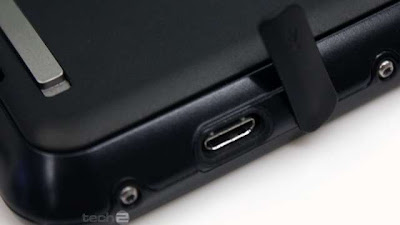Nokia's Lumia 900 smartphone will hit AT&T's store shelves on April 8, a move Nokia hopes will usher a return to the U.S. in a big way.
The phone will sell for $99.99 with a two-year contract, AT&T told CNET. It is one of the most affordable flagship products AT&T has ever sold.
There's a lot at stake with this launch. Nokia badly needs a buzz-worthy hit product in the U.S., a market it has struggled to operate in over the last few years despite dominating early in the cellphone business. AT&T hopes the 4G LTE-capable Lumia 900 will spark interest in its still new next-generation network. Microsoft, meanwhile, needs any Windows Phone to succeed in the market and establish some legitimacy to its platform.
The Lumia 900 faces the same challenges that many past Windows Phones have struggled to overcome, including convincing consumers that the relatively new mobile operating system is worth taking over Apple's iOS and Google's Android. The iPhone and a host of high-end Android smartphones dominate current sales.
Nokia already has a smartphone in the U.S. with the Lumia 710 for T-Mobile USA, and the device appears to be selling well. But the phone, which was designed to be more affordable at the expense of higher end specifications, hasn't been a blockbuster and is selling at the country's fourth-place wireless carrier.
The Lumia 900, by contrast, will come packed with some of Nokia's best hardware. The phone will have a 4.3-inch ClearBlack Amoled display, an 8-megapixel Carl Zeiss camera lens, and a higher capacity 1830 mAh battery. The phone will be available in matte black and cyan blue, while a white version will hit the market on April 22.
Customers can begin preordering the black and blue versions on March 30 in store and online.
At $99.99, the hope is the attractive price tag will be enough to turn some heads and get the device in the conversation for consumers considering a new phone. A typical flagship phone will sell initially for $200 or more.
The Lumia 900 should get a fair share of marketing support. Nokia's partnership with AT&T was one of the carrier's centerpiece announcements at this year's Consumer Electronics Show, part of a broader push for LTE products. The phone was Nokia's big announcement at CES.
With AT&T still rolling out LTE products and markets, the company will give this product a lot attention. Another planned LTE Windows Phone, the HTC Titan II, isn't expected to get the same kind of push.
With few indications that Verizon Wireless or Sprint Nextel are rushing to stock new Windows Phones, Nokia and Microsoft only have AT&T and T-Mobile to rely on in the near term, at least in the U.S. Elsewhere, there are signs Nokia's Windows Phone is starting to surpass its older Symbian smartphone platform.
But in the U.S., where Symbian never got off the ground, Nokia has a blank slate to work on.


















































